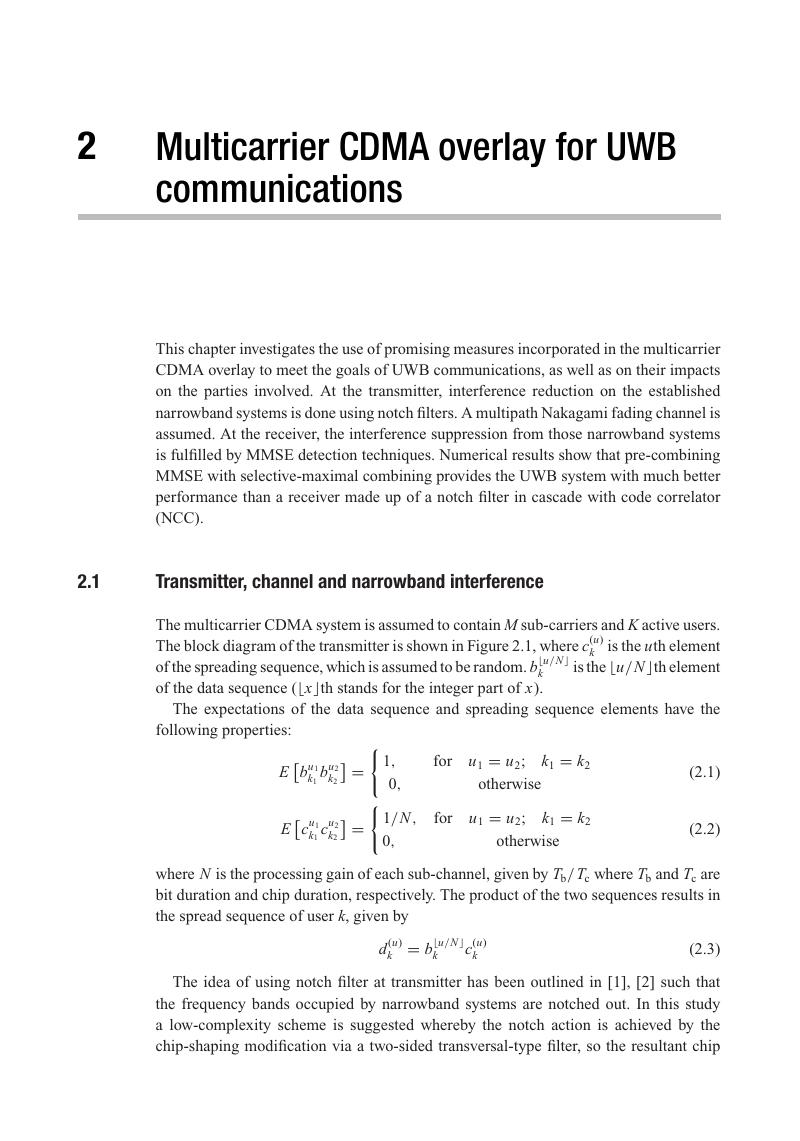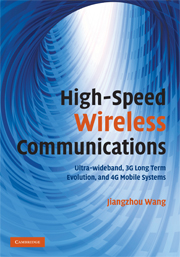Book contents
- Frontmatter
- Contents
- Preface
- Acknowledgements
- List of abbreviations
- Part I Introduction
- Part II UWB communications
- 2 Multicarrier CDMA overlay for UWB communications
- 3 Impulse radio overlay in UWB communications
- 4 Rapid acquisition
- Part III Evolved 3G mobile communications
- Part IV 4G mobile communications
- Index
- References
2 - Multicarrier CDMA overlay for UWB communications
from Part II - UWB communications
Published online by Cambridge University Press: 27 May 2010
- Frontmatter
- Contents
- Preface
- Acknowledgements
- List of abbreviations
- Part I Introduction
- Part II UWB communications
- 2 Multicarrier CDMA overlay for UWB communications
- 3 Impulse radio overlay in UWB communications
- 4 Rapid acquisition
- Part III Evolved 3G mobile communications
- Part IV 4G mobile communications
- Index
- References
Summary

- Type
- Chapter
- Information
- High-Speed Wireless CommunicationsUltra-wideband, 3G Long Term Evolution, and 4G Mobile Systems, pp. 33 - 67Publisher: Cambridge University PressPrint publication year: 2008



